In this video Professor Anne Phillips and Co-Chair of iDEAL Diabetes CIC introduces about diabetes and living with hear impairment with diabetes and discusses the value to the resources within this webpage regarding increasing knowledge and awareness about hear impairment related to living with diabetes.
Diabetes is a prevalent metabolic disorder. More than 463 million people worldwide have Type 2 diabetes resulting from impaired insulin secretion or resistance to it.
While conventional diabetes resources extensively cover complications like neuropathy, retinopathy, and nephropathy, there is a notable lack of literature addressing hearing impairment as a potential complication of diabetes.
As people age, they are more susceptible to experiencing increased hearing loss due to various factors such as cumulative noise exposure, genetic predisposition, and age-related degeneration of the auditory system (Lin et al., 2011).
Research indicates that approximately one in three adults aged 65 to 74 and nearly half of those over 75 have hearing loss (Goman & Lin, 2016).
Moreover, untreated hearing loss can lead to social isolation, cognitive decline, and decreased quality of life (Livingston et al., 2017).

This animation which can be viewed below offers you opportunity to promote LET’S HEAR NOW and encourages its use with every person with diabetes
(Click the image below to play video)
–
Signs of hearing impairment
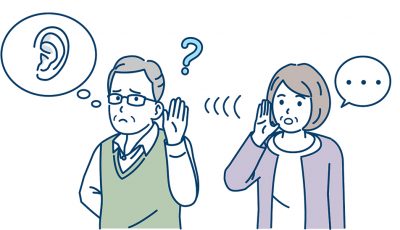
The American Diabetes Association describes the signs of hearing impairment on their website:
- Frequently asking others to repeat themselves.
- Trouble following conversations that involve more than two people.
- Thinking that others are mumbling.
- Problems hearing in noisy places such as busy restaurants.
- Trouble hearing the voices of women and small children.
- Turning up the TV or radio volume too loud for others who are nearby.
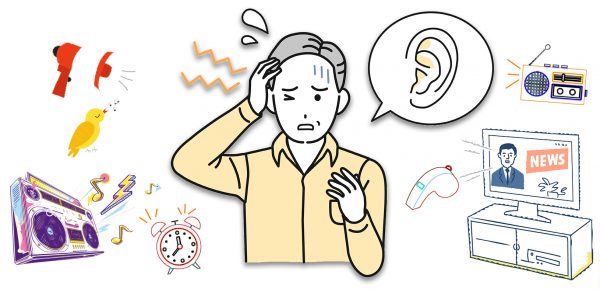

–
Type 2 diabetes was associated with a 41% increased prevalence of age-related hearing loss after adjusting for potential confounders (Mitchell et al., 2009).
Diabetes mellitus as a significant independent risk factor for hearing loss, supporting the link between diabetes and auditory complications (Spankovich & Yerraguntla, 2019).
The convergence of ageing and diabetes as individual risk factors for hearing loss underscores the multifactorial nature of this sensory impairment. While age-related degeneration of the auditory system remains a prominent contributor, emerging research suggests that diabetes may exacerbate this risk. The correlation between type 2 diabetes and an increased prevalence of age-related hearing loss emphasizes the need for comprehensive healthcare approaches that address the interconnectedness of chronic conditions. Importantly, in the context of diabetes, hearing loss can compound existing challenges in healthcare engagement and management.
As individuals with hearing loss may experience difficulties in comprehending healthcare recommendations, miscommunication and subsequent reduced engagement to treatment regimens can ensue, potentially compromising the prognosis of diabetes.
Addressing challenges in managing hearing loss involves navigating various factors, including:
- age-related issues
- availability of hearing aids
- affordability concerns
Ageing presents as a significant individual obstacle, with studies by Reisinger et al. (2023) highlighting it as a risk factor for hearing impairment. Similarly, research by Oh et al. (2014) and Konrad-Martin et al. (2015) emphasizes the impact of age-related changes on auditory health, particularly in people with diabetes.
Recent findings by Abraham (2023) demonstrated that the severity of hearing impairment escalates with:
- advancing age
- higher HbA1c levels
- worsening degrees of nephropathy and neuropathy
Hearing impairment often goes undetected due to its gradual decline and invisible symptoms. The extent of sensorineural hearing impairment in individuals with diabetes can vary, with this type of hearing loss typically worsening progressively and being more pronounced in those who have lived with diabetes for an extended period. Diabetes related neuropathy may also contribute to intensifying hearing loss.
While sensorineural hearing impairment due to diabetes can manifest in individuals of any age, it is notably more common and severe among older adults.
As the duration of diabetes increases, so does the likelihood of developing sensorineural hearing impairment, particularly in middle-aged or older individuals. Younger people with diabetes are also at risk, especially if their blood glucose levels are sub optimally managed or if they experience other diabetes-related complications.

Fig 1 – 1A and 1B: Abraham (2023) demonstrated the prevalence of hearing loss (HL) and clinically significant hearing loss (CSHL). (A) Prevalence of HL and CSHL in patients with neuropathy and without neuropathy; (B) Prevalence of HL and CSHL in patients without neuropathy (MDNS* grade 0), mild neuropathy (MDNS grade 1) and moderate to severe neuropathy (MDNS grade 2); *MDNS, Michigan Diabetic Neuropathy Score.
Psychological and emotional impact

Hearing impairment in individuals with diabetes not only affects their auditory abilities but also has profound psychological and emotional implications. The condition significantly impacts one’s quality of life, leading to feelings of social isolation and alienation.
Individuals with hearing impairment often experience heightened levels of anxiety and depression due to communication challenges and difficulties in engaging with their surroundings effectively.


The cognitive impairment associated with hearing loss further exacerbates these emotional struggles, affecting daily functioning and overall well-being.
Moreover, the economic consequences of hearing impairment can add to the psychological burden, as individuals may face challenges in employment opportunities and social interactions, leading to financial strain and reduced quality of life.


The coexistence of type 2 diabetes and hearing impairment presents a complex interplay of risk factors for adverse health outcomes, including an increased risk of dementia.
Individuals with moderate hearing impairment face a threefold higher risk of developing dementia, while those with severe hearing impairment have a fivefold higher risk compared to individuals with normal hearing. This heightened risk underscores the importance of addressing hearing impairment in individuals with diabetes to mitigate the psychological, emotional, and cognitive consequences associated with both conditions.
Comprehensive management strategies that include regular hearing assessments, communication support, and psychological interventions are essential to improve the overall well-being and quality of life of individuals with diabetes and hearing impairment.

–
Other potential risks associated with untreated hearing impairment.
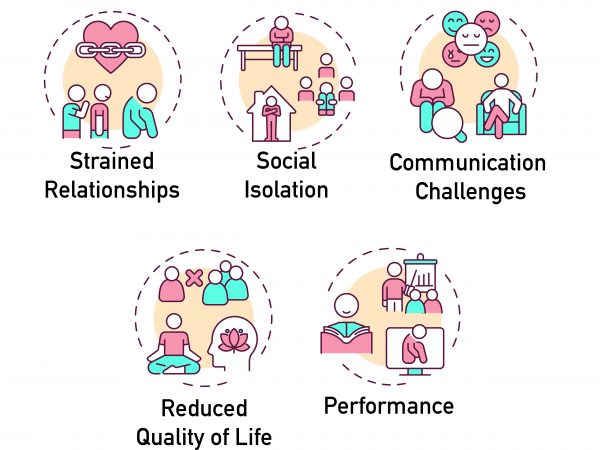
Untreated hearing impairment can pose various risks and challenges beyond the auditory domain, impacting multiple aspects of an individual’s life.
- Communication Challenges: Difficulty in understanding speech and communicating effectively can hinder interactions in both personal and professional settings, leading to misunderstandings and frustration.
- Social Isolation: Hearing impairment can result in difficulties engaging in social activities and conversations, potentially leading to feelings of isolation and exclusion from social interactions, which can have adverse effects on mental health and overall well-being.
- Strained Relationships: Challenges in communication with family and friends due to hearing loss can strain relationships, create barriers to effective interaction, and contribute to misunderstandings and conflicts.
- Reduced Quality of Life: Untreated hearing impairment can significantly diminish one’s quality of life by limiting participation in social events, affecting emotional well-being, and impeding the enjoyment of everyday activities.
- Performance: In the workplace, hearing impairment may impact professional performance, as difficulties in communication can hinder productivity, collaboration, and overall job satisfaction. These risks associated with untreated hearing impairment highlight the importance of early detection, intervention, and management to mitigate the negative consequences on various aspects of an individual’s life.
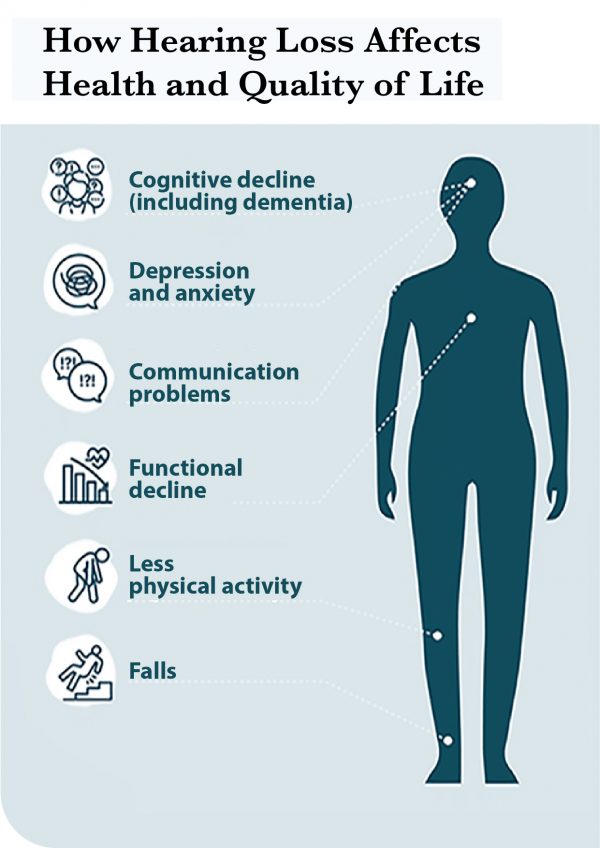
Other possible pathophysiological mechanisms of diabetes related hearing loss
- In diabetes, elevated blood glucose levels lead to increased flux through the polyol pathway, resulting in the accumulation of sorbitol and fructose within cells. The accumulation of sorbitol and fructose within auditory tissues can lead to cellular damage through osmotic stress and oxidative stress. Osmotic stress caused by the accumulation of sorbitol can disrupt cellular function and lead to cell swelling and damage in the cochlea, affecting auditory signal transduction. Oxidative stress can result in inflammation, apoptosis, and mitochondrial dysfunction in the cochlea.
- Microangiopathy, a common complication of diabetes, involves the damage to small blood vessels, including those in the inner ear. This vascular impairment can lead to reduced blood flow and oxygen supply to the delicate structures of the auditory system, contributing to hearing loss. The involvement of minute vessels in the inner ear can cause hypoxia, which in turn leads to hearing impairment.
- Glutathione dysregulation, which involves an imbalance in antioxidants like glutathione, can lead to oxidative stress and inner ear damage, potentially contributing to hearing loss.
- Glutamate excitotoxicity, characterized by excessive stimulation of nerve cells by the neurotransmitter glutamate, has been linked to neuronal damage in the auditory system. The dysregulation of glutamate signaling pathways in diabetes may contribute to excitotoxic damage in the cochlea, affecting the transmission of auditory signals and contributing to hearing loss.
- Mitochondrial dysfunction, a common feature in diabetes, can impact energy production and cellular function in the auditory system. Impaired mitochondrial activity may lead to decreased ATP production, increased oxidative stress, and compromised cell survival in the cochlea, ultimately contributing to hearing loss.
- Advanced glycation end products, formed in high glucose conditions, can accumulate in the inner ear, leading to tissue damage and potentially contributing to hearing loss. The presence of AGEs in the cochlea may lead to structural and functional alterations in the auditory system. Targeting pathways involved in AGE formation and accumulation could be a potential approach to prevent or mitigate diabetes-related hearing impairment.
- Inflammation, a key component of the pathophysiology of diabetes, can also impact the auditory system. Chronic low-grade inflammation in diabetes may lead to damage in the cochlea and auditory nerves, contributing to hearing loss. The inflammatory response in the auditory system can disrupt normal cellular functions and signaling pathways, highlighting the need to address inflammation as a potential therapeutic target for managing diabetes-related hearing impairment.
- Protein synthesis dysfunction may disrupt the production of essential proteins for auditory function. Investigating the specific proteins involved in auditory function and their dysregulation in diabetes, along with understanding the impact of protein synthesis dysfunction on the auditory system in individuals with diabetes is crucial for developing interventions that target this specific mechanism to mitigate hearing loss.
–
Treatments:
Strategies for Aural Rehabilitation and Effective Communication
Aural rehabilitation strategies aim to enhance an individual’s capacity to interpret and process auditory information effectively by utilizing supportive listening devices like the pocket talker, which amplifies sound for improved comprehension, along with implementing lip-reading techniques to supplement auditory cues and enhance communication. (Eby et al., 2020).
Campos et al., (2023) demonstrated that continuous hearing aid use is associated with lower fall prevalence and risk in older adults with hearing loss. These strategies play a crucial role in addressing the challenges posed by hearing impairment in individuals with diabetes, promoting better communication and overall quality of life.

Hearing Devices
Hearing Aids

Hearing aids serve as foundational tools in addressing auditory impairments among individuals with non-surgical hearing issues across a spectrum of severity, ranging from mild to severe. These devices operate on advanced audio amplification technology, working to enhance incoming sounds to compensate for deficits in auditory perception.
By tailoring amplification to specific frequency ranges, hearing aids accommodate the unique hearing profiles of users, thereby optimizing speech perception and facilitating meaningful engagement with the auditory environment.
Modern hearing aids integrate cutting-edge engineering principles with ergonomic design considerations to ensure both effectiveness and user comfort.
Digital signal processing algorithms, characteristic of contemporary hearing aid technology, enable real-time adjustments to amplify speech signals while minimizing background noise, thus improving speech intelligibility in noisy settings.
Hearing aids encompass a range of rehabilitative functionalities aimed at optimizing auditory outcomes beyond mere amplification. Connectivity options like Bluetooth and wireless streaming capabilities empower users to interface with various audio devices, including smartphones and televisions, enhancing accessibility and convenience.
Beyond auditory rehabilitation, the psychosocial impact of hearing aids is profound, as they mitigate communication barriers and foster social connectivity.
The cost-effectiveness of hearing aids and patient accessibility to these devices, particularly in developing countries, remain significant challenges. Through a holistic approach blending technological innovation with patient-centred care, though hearing aids continue to play a pivotal role in empowering individuals with hearing impairments to engage confidently with their auditory surroundings, their cost-effectiveness and patient’s accessibility to these devices especially in developing countries is not encouraging.

Cochlear implants
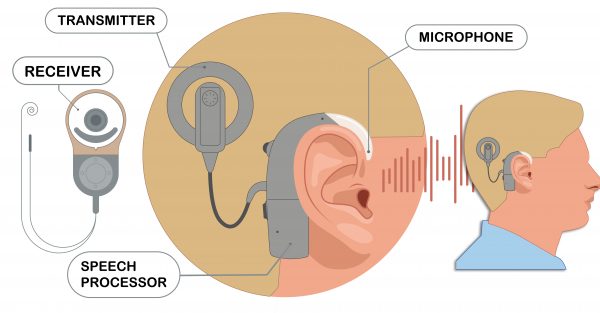
Cochlear implants stand as a transformative solution for individuals confronting severe to profound hearing impairment, particularly those who derive limited benefit from traditional hearing aids. Tailored primarily for individuals with severe hearing loss, cochlear implants represent a remarkable technological advancement in auditory rehabilitation. Unlike hearing aids, which amplify sound, cochlear implants circumvent damaged portions of the ear and directly stimulate the auditory nerve, thus bypassing the impaired sensory pathways. By restoring the perception of sound, cochlear implants offer individuals with profound hearing impairment a renewed capacity for auditory perception and communication.
Through surgical placement and post-operative rehabilitation, cochlear implant recipients can experience significant improvements in speech recognition, language development, and psychosocial well-being. Moreover, cochlear implants enable recipients to engage more effectively in social interactions, educational pursuits, and professional endeavours, thereby fostering greater independence and integration into mainstream society.
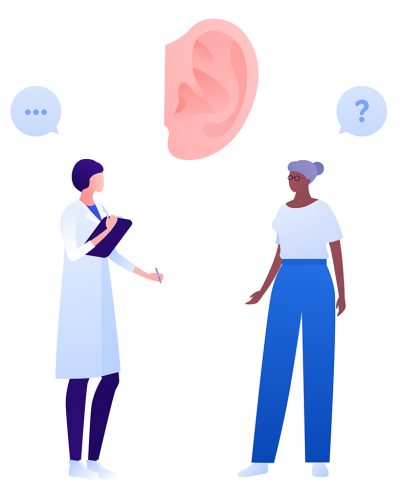
Challenges in correcting hearing loss
Addressing challenges in managing hearing loss involves navigating various factors, including age-related issues, availability of hearing aids, and affordability concerns. Ageing presents as a significant individual obstacle, with studies by Reisinger et al. (2023) highlighting it as a risk factor for hearing impairment. Similarly, research by Oh et al. (2014) and (Nash et al., 2013) emphasizes the impact of age-related changes on auditory health, particularly in patients with diabetes.
Affordability is another critical issue, with financial barriers hindering access to hearing loss interventions. Addressing these challenges necessitates comprehensive strategies that enhance access to hearing healthcare services, improve affordability, and raise awareness about effectively managing hearing loss, particularly in patients with diabetes.
Addressing the challenges associated with managing hearing loss in people with diabetes requires innovative solutions that are accessible and cost-effective.

–
Stethospeak method
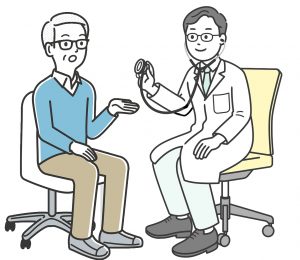
Stethospeak is copyrighted to Dr Amit Rajput Janarao, Consultant Diabetologist, Jalgaon, Maharashtra, India, who is happy for you to adopt this approach in your clinical consultation conversations.
–
Dr Julia Burden, Leicester Diabetes centre describes delivery of education for people with type 2 diabetes and who are experiencing hearing loss/ impairment.
–
10 Jan 2025 10:45 updated



